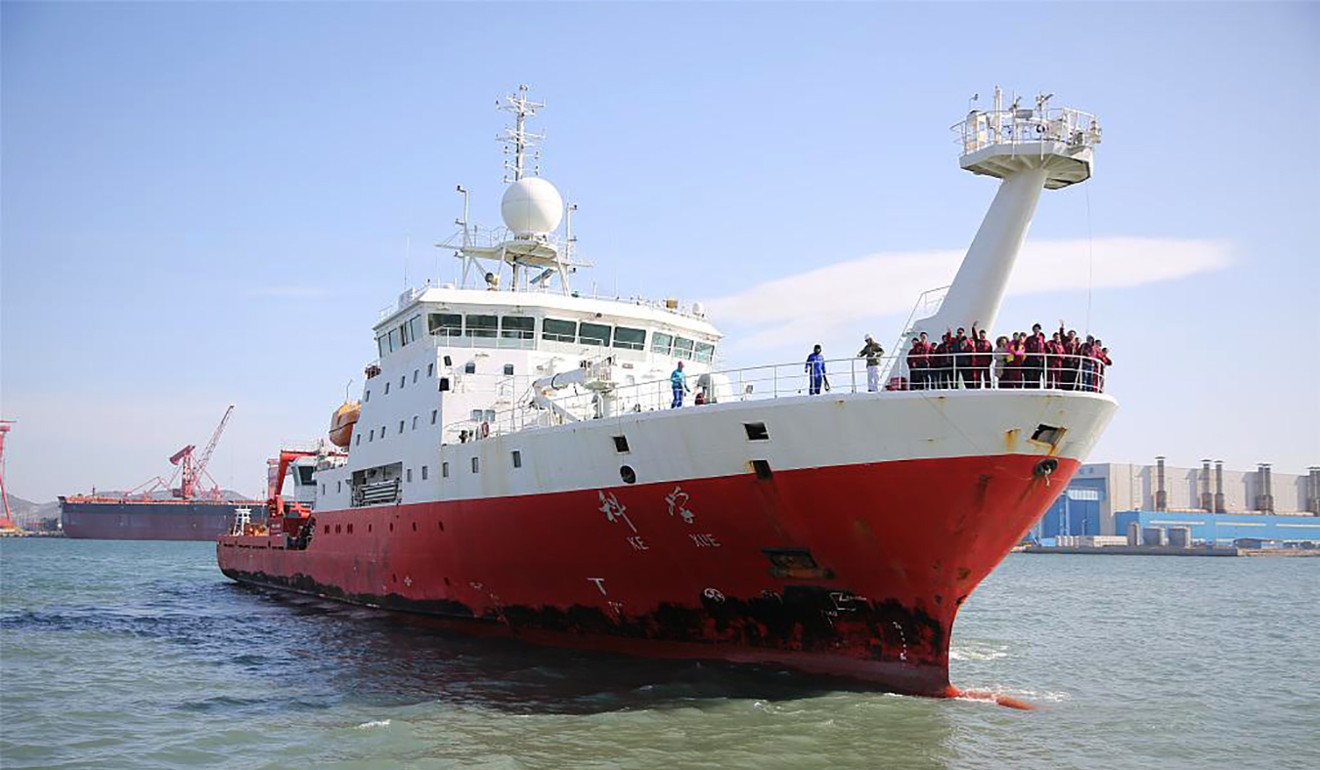Liu Zhen
 Researchers conduct test transmission of real-time data between deep ocean transponders and Beidou navigation satellite system in western Pacific
Researchers conduct test transmission of real-time data between deep ocean transponders and Beidou navigation satellite system in western Pacific
Analysts say it could benefit China’s fledgling nuclear-powered ballistic missile submarine fleet
China’s nuclear submarines may be stealthier and better able to communicate in the deep ocean after progress was made on key technology, according to state media.
People’s Daily reported on Friday that a successful test transmission of real-time high-capacity data between deep ocean transponders and the Beidou navigation satellite system had been carried out.
Marine research ship Kexue, or “Science”, conducted the test in the western Pacific along with several other missions on a 74-day trip before returning to its home base of Qingdao, Shandong on Thursday.
Wang Fan, one of the marine scientists aboard the vessel, told the state newspaper important progress had been made.
“This technology … significantly increases the safety, independence and reliability of deep ocean data transmission,” Wang said, adding that using China’s Beidou system meant the submarines no longer had to rely on foreign satellites for such communication.
 “The transponder with Beidou, at a depth of 6,000 metres, has been safely in operation for more than a month now and it is working well,” Wang said.
“The transponder with Beidou, at a depth of 6,000 metres, has been safely in operation for more than a month now and it is working well,” Wang said.
Real-time underwater transmission of temperature, salinity and currents data at the 6,000 metres depth – with transponders relaying signals every 100 or 500 metres – was “another big breakthrough” for the team, Wang added.
They did this using a combination of inductive coupling and underwater acoustic communication technologies, the scientist said.
Although the report did not give details on data size or quality of the transmission, the technology – when fully developed – could be useful to China’s submarines, especially its fledgling nuclear-powered ballistic missile-carrying (SSBN) fleet, according to analysts.
Transmitting information from the depths of the vast ocean is difficult, especially through the electromagnetic waves typically used in communication systems. Command and control of ballistic-missile submarines is done from land using very low or extremely low frequency communications, but the amount of data that can be transmitted is limited and can only go one way.
“[A submarine] usually can’t transmit on its own unless it raises a communications mast or buoy to the surface,” said Collin Koh, a research fellow with the Maritime Security Programme at Nanyang Technological University in Singapore.
But doing so increases the risk of the submarine being detected, so a satellite link makes for stealthier and more efficient communication.
Adam Ni, a researcher with Macquarie University in Sydney, said the development was the latest in China’s drive to modernise its submarine fleet.
“Along with advances in submarine stealth technology, strong surface fleet [to complement] infrastructure, and space-based information support, the latest breakthrough is another element of China’s modernising submarine power, especially its SSBN force, which is increasingly important for nuclear deterrence,” Ni said.
During its 12,000 nautical mile voyage, the Kexue also upgraded China’s observation network in the western Pacific, including 20 sets of deep ocean equipment, four large floating devices and more than 1,000 observation facilities that have been collecting information for five years, the report said.
No comments:
Post a Comment